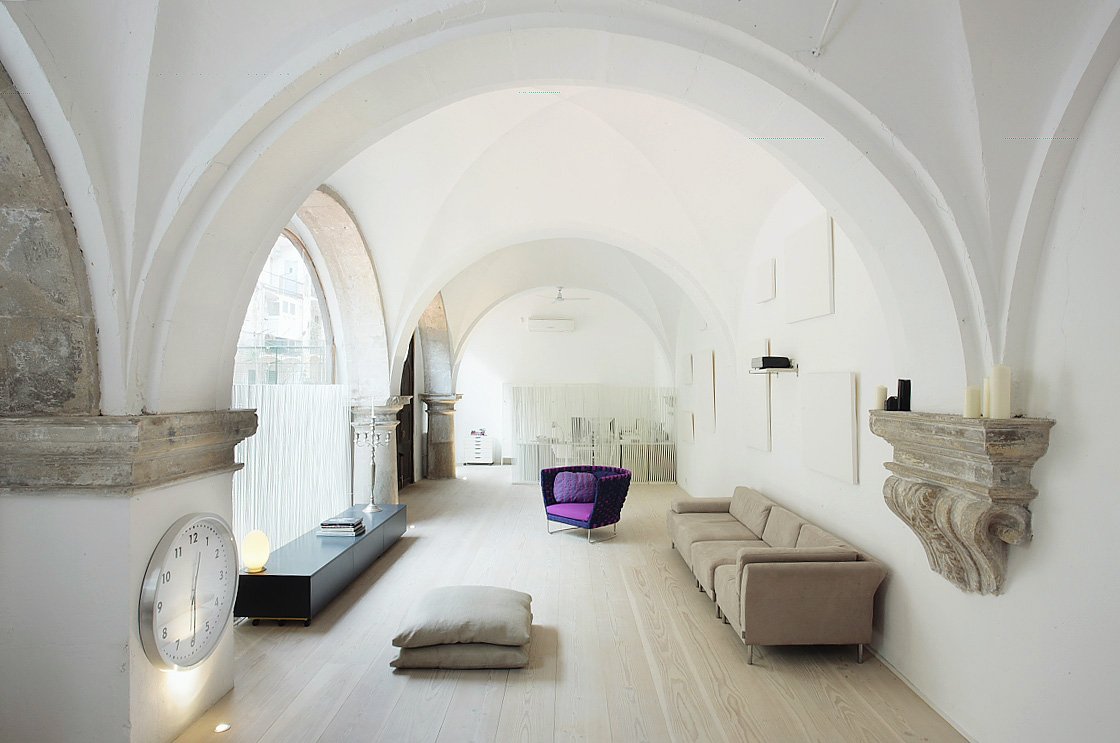#8400. Minimalism under historical vaults: harmony of past and present
This interior represents a magnificent example of adaptive restoration of a historical space. The room with characteristic vaulted ceilings, typical for ancient buildings, has been transformed into a minimalist modern dwelling while preserving the architectural value of the original structure.
The snow-white arched vaults create a sense of airiness and spaciousness, simultaneously reminiscent of the monastic or ecclesiastical past of the building. Special expressiveness is added to the interior by the preserved architectural elements — stone consoles on the sides of the room, which act as distinctive historical artifacts against the minimalist setting.
The designer skillfully combines historical heritage with contemporary solutions: light wooden flooring visually expands the space, while the neutral color palette of the furniture (predominantly beige and white tones) emphasizes the architectural features of the room. The only bright accent is the purple armchair, adding dynamism to the otherwise austere interior.
Minimalist white panels on the walls harmoniously fit into the overall concept without competing with the architecture of the space. Lighting is implemented delicately and unobtrusively, highlighting the relief of the vaults.
This project demonstrates how one can adapt historical architecture for modern living while maintaining respect for the original character of the building. A similar approach can be applied when working with other historical spaces where finding a balance between preserving architectural heritage and creating a comfortable contemporary interior is important.
